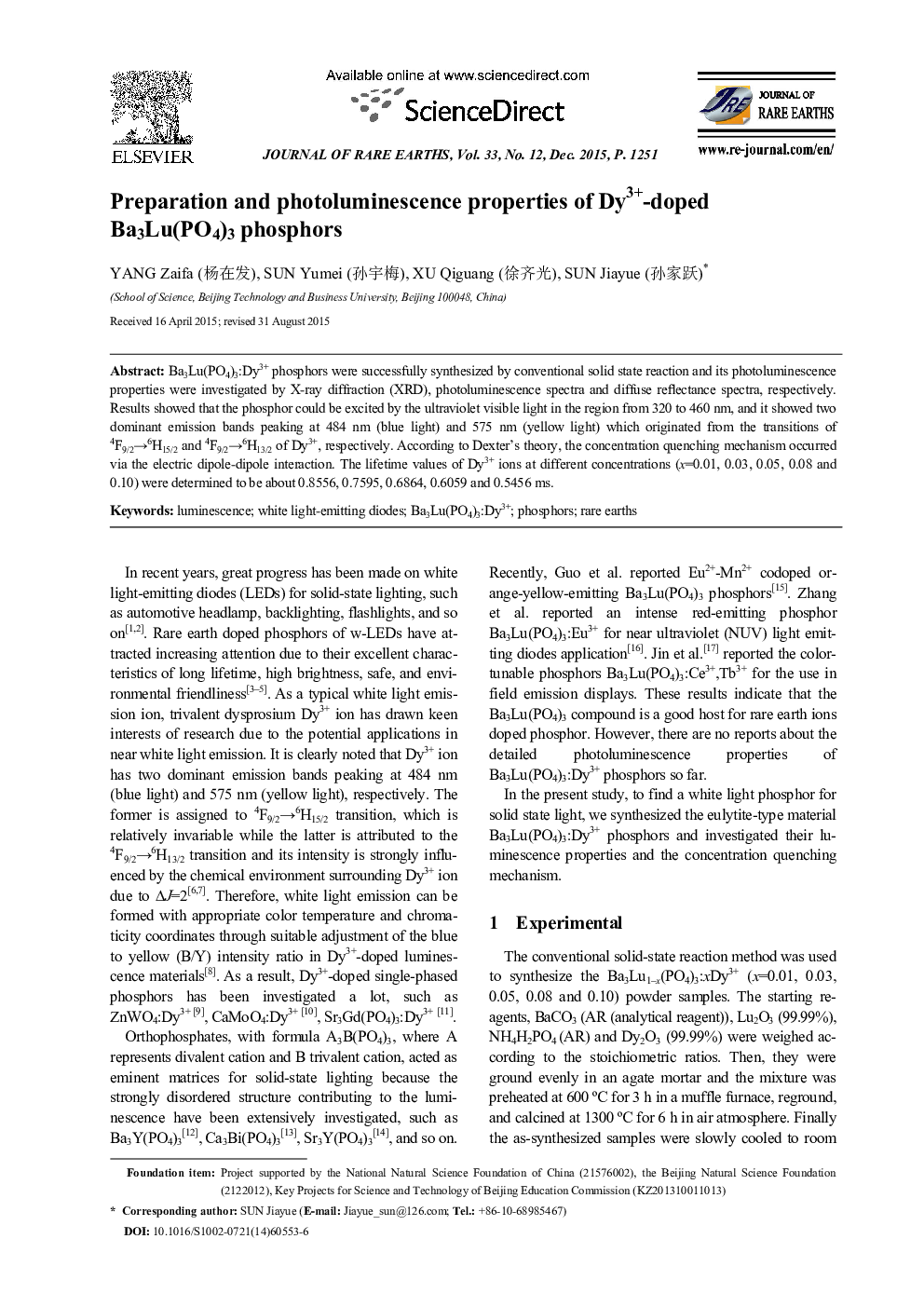| کد مقاله | کد نشریه | سال انتشار | مقاله انگلیسی | نسخه تمام متن |
|---|---|---|---|---|
| 1259789 | 971696 | 2015 | 5 صفحه PDF | دانلود رایگان |

Ba3Lu(PO4)3:Dy3+ phosphors were successfully synthesized by conventional solid state reaction and its photoluminescence properties were investigated by X-ray diffraction (XRD), photoluminescence spectra and diffuse reflectance spectra, respectively. Results showed that the phosphor could be excited by the ultraviolet visible light in the region from 320 to 460 nm, and it showed two dominant emission bands peaking at 484 nm (blue light) and 575 nm (yellow light) which originated from the transitions of 4F9/2→6H15/2 and 4F9/2→6H13/2 of Dy3+, respectively. According to Dexter's theory, the concentration quenching mechanism occurred via the electric dipole-dipole interaction. The lifetime values of Dy3+ ions at different concentrations (x=0.01, 0.03, 0.05, 0.08 and 0.10) were determined to be about 0.8556, 0.7595, 0.6864, 0.6059 and 0.5456 ms.
Graphical AbstractPL spectra for Ba3Lu1–x(PO4)3:xDy3+ with different Dy3+ concentrations (The inset shows the dependence of emission intensity on the Dy3+-doping concentration)Figure optionsDownload as PowerPoint slide
Journal: Journal of Rare Earths - Volume 33, Issue 12, 1 December 2015, Pages 1251–1255